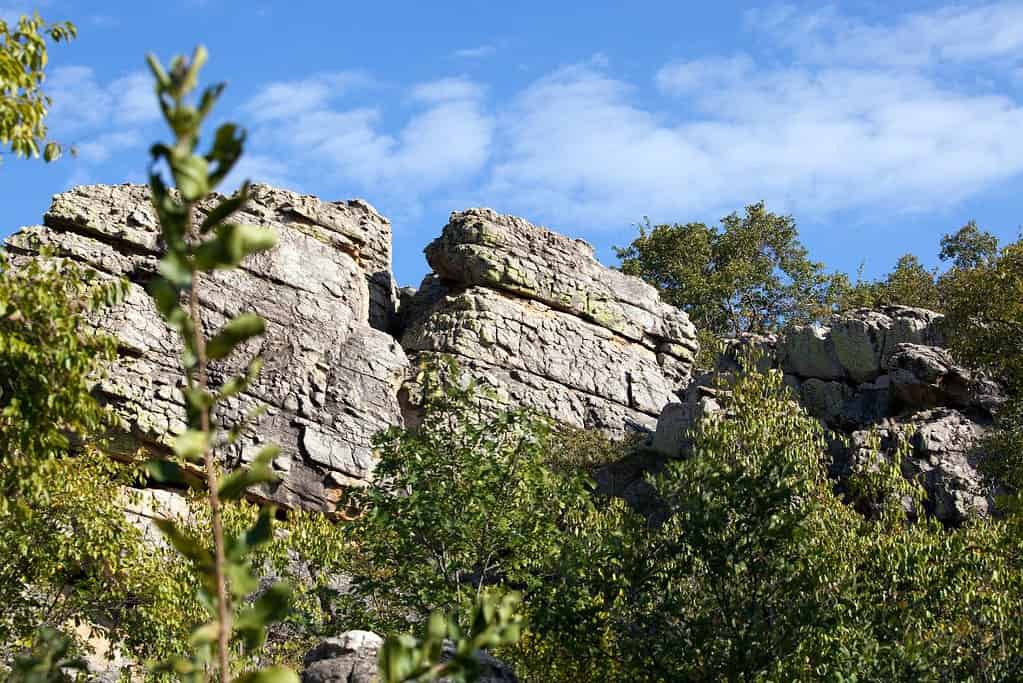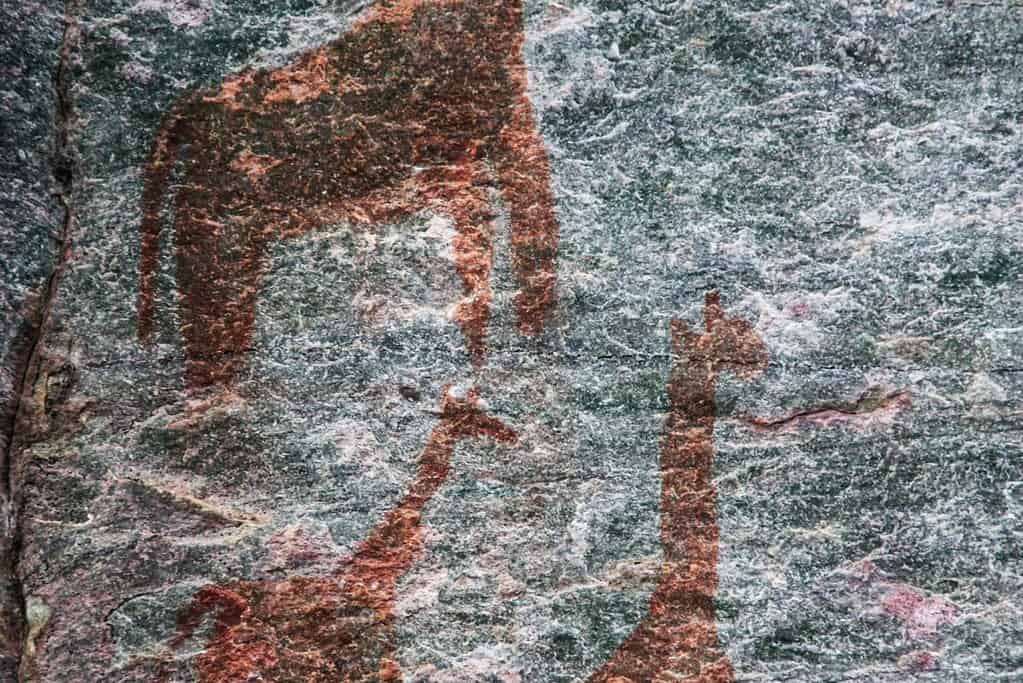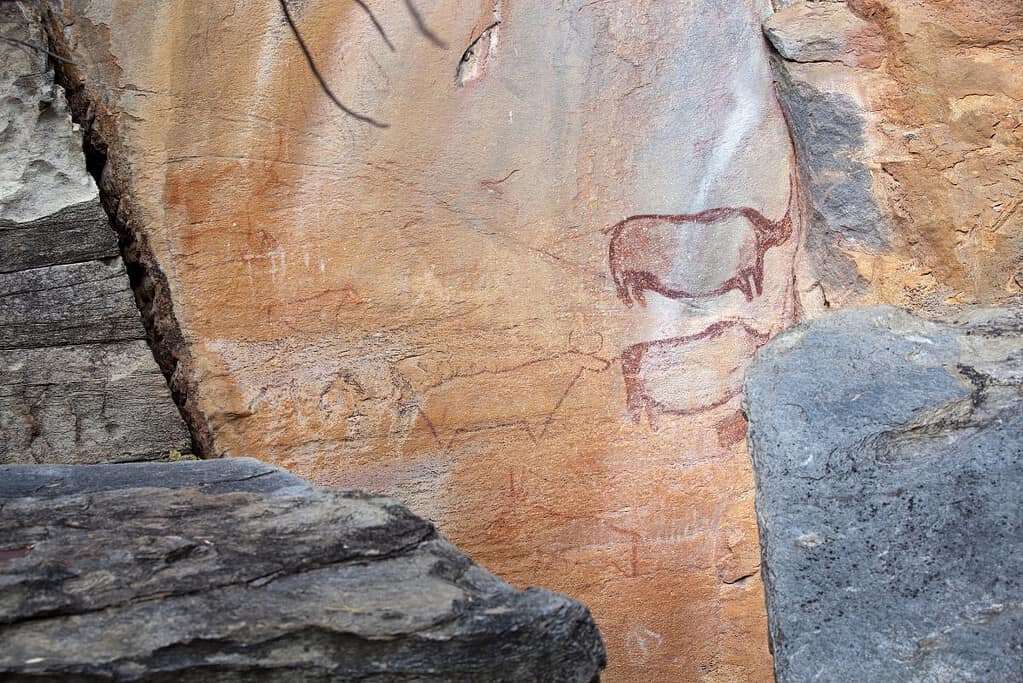Nestled in the northwestern corner of Botswana, the Tsodilo Hills rise majestically from the otherwise flat and arid Kalahari Desert. This remote, enigmatic site is often referred to as the “Louvre of the Desert,” owing to its rich collection of rock art paintings that provide a window into the ancient soul of Africa. This blog delves into the fascinating history of Tsodilo Hills, exploring its cultural significance, archaeological treasures, and the spiritual beliefs of the local communities that have revered this site for millennia.
Table of Contents
A Sacred Landscape
The Tsodilo Hills consist of four main hills, known locally as the Male, Female, Child, and an unnamed knoll. These hills are not just prominent geographical features but are imbued with deep spiritual significance. The local San people, often called Bushmen, consider Tsodilo a sacred site inhabited by the spirits of their ancestors. The hills are believed to be a resting place for the spirits of the dead, making it a crucial site for both ritual and pilgrimage.

The Rock Art Gallery
One of the most compelling features of Tsodilo is its rock art. With over 4,500 paintings scattered across 400 sites, the hills boast one of the highest concentrations of rock art in the world. These artworks vary from red ochre finger paintings to more elaborate depictions of animals and human figures. Researchers believe that the art spans several epochs, with some paintings dating back as far as 24,000 years.

The rock paintings at Tsodilo provide insights into the changing environment and fauna of the region. Early paintings often depict large animals like giraffes, elephants, and rhinoceros, which were once abundant in the area. Over time, the art becomes more complex, showing scenes of hunting, dancing, and other aspects of human life, reflecting a deepening relationship between the people and their environment.
Archaeological Discoveries
Beyond the rock art, Tsodilo has yielded a wealth of archaeological finds. Excavations have uncovered evidence of human occupation dating back at least 100,000 years. Stone tools, pottery shards, and even remnants of iron smelting furnaces tell a story of a continuously inhabited landscape, where generations of hunter-gatherers, pastoralists, and later agricultural communities lived.
One of the most significant archaeological findings was the discovery of a python-shaped rock carving in one of the caves. This artifact, along with evidence of controlled fires and ritualized burials, suggests that Tsodilo was not only a home but a spiritual and ceremonial center. Some anthropologists believe that the python figure could be an early form of the Rainbow Serpent, a common deity in many African mythologies, symbolizing fertility and creation.
Spiritual Beliefs and Practices
For the San and later Hambukushu peoples, Tsodilo remains a living spiritual entity. The hills are often the site of healing ceremonies, rainmaking rituals, and spiritual guidance. Pilgrims come to these hills to communicate with their ancestors, seek blessings, and perform cleansing rituals. This ongoing spiritual activity highlights the continuity of cultural traditions and the deep connection between the people and this landscape.
The role of Tsodilo in modern times extends beyond its local significance. Recognized as a UNESCO World Heritage Site in 2001, Tsodilo has gained international recognition for its cultural and historical importance. This designation has helped protect the site and promote sustainable tourism, which provides a source of income for the local communities while offering visitors from around the world a glimpse into Africa’s ancient past.
Conservation Challenges
Despite its protected status, Tsodilo faces several conservation challenges. The increase in tourism, while beneficial economically, poses risks to the delicate rock art and the natural environment. Managing visitor impact, along with combating the effects of climate change, which can cause fading and erosion of the rock paintings, remains a critical priority.

Local and international efforts are underway to preserve this invaluable cultural heritage. Conservation projects focus not only on the physical preservation of the art and archaeological sites but also on supporting the intangible cultural heritage of the indigenous communities for whom Tsodilo is sacred.
Conclusion
Tsodilo Hills is more than just an archaeological site; it is a vibrant testament to the spiritual, cultural, and artistic expressions of the human spirit. The history of Tsodilo is a continuous narrative of humanity’s interaction with the environment, a sacred dialogue between nature and culture that stretches back thousands of years. For those fortunate enough to visit, Tsodilo offers a profound connection to the past, an opportunity to reflect on the universality of human experience, and a poignant reminder of the spiritual ties that bind us to our environment. As we move forward into the future, preserving such sites is crucial not only for understanding our past but for enriching our global cultural heritage.
Read the Botswana article here.
